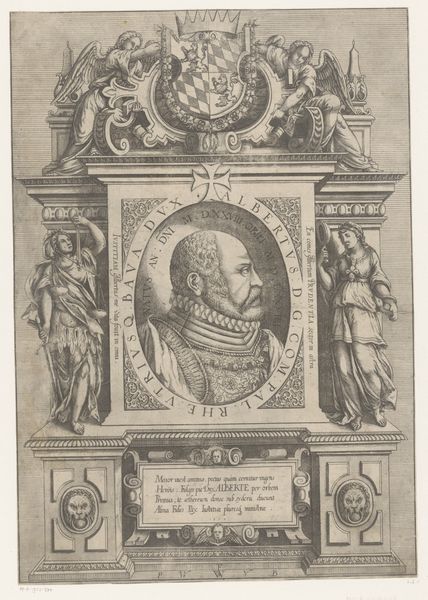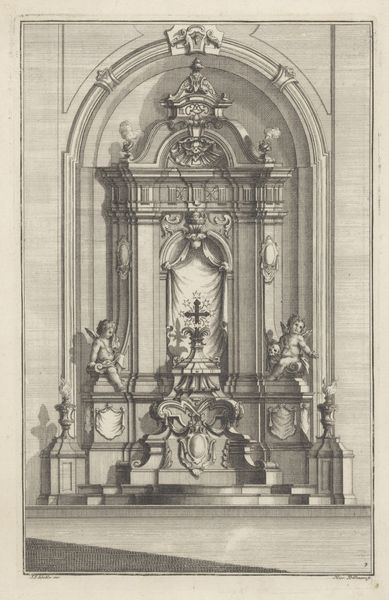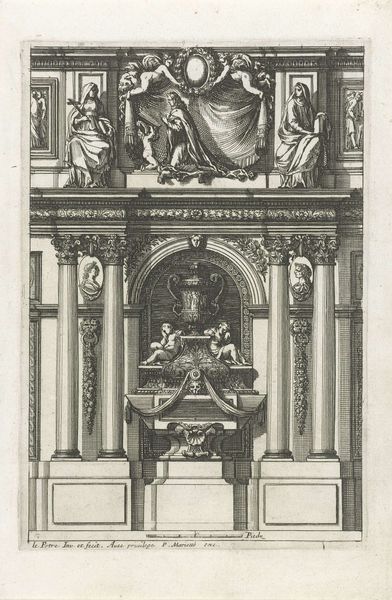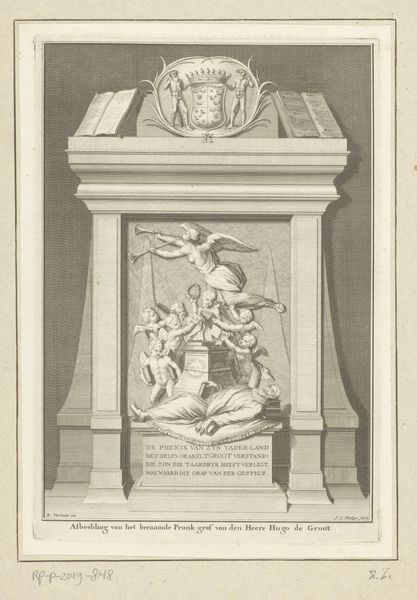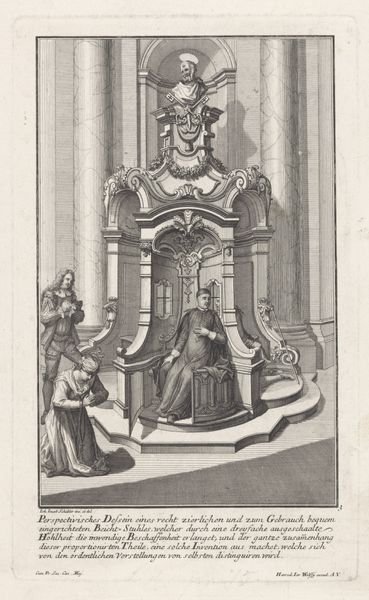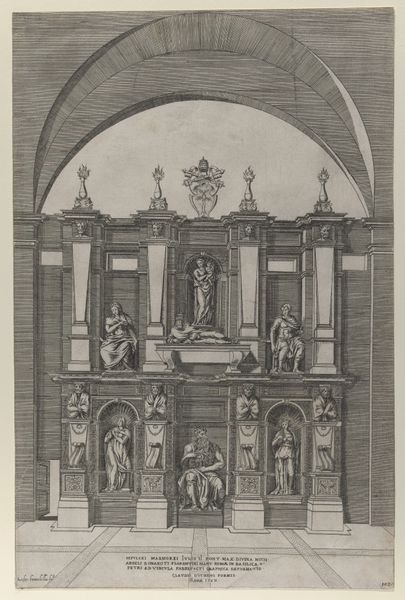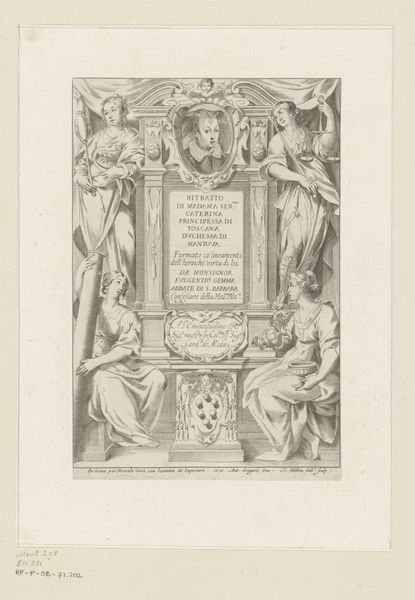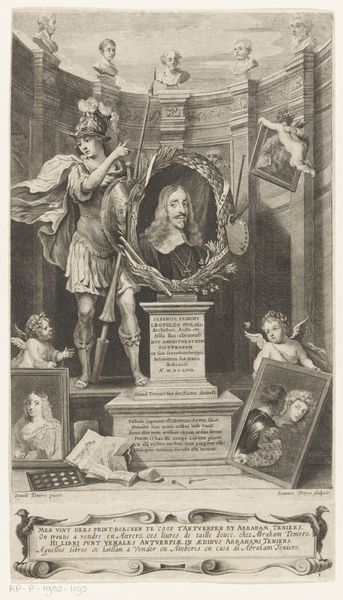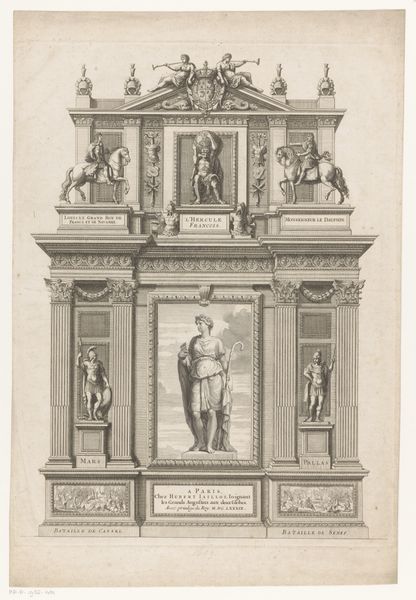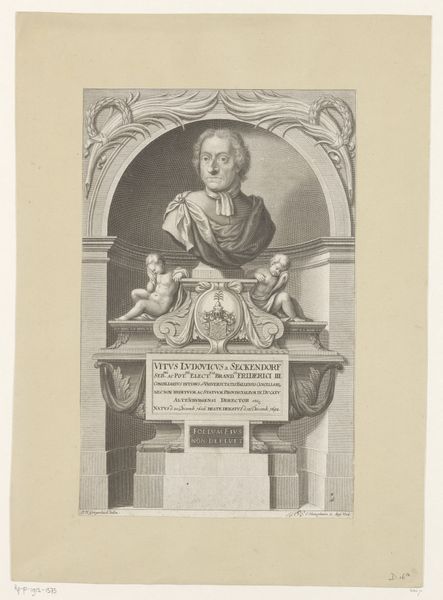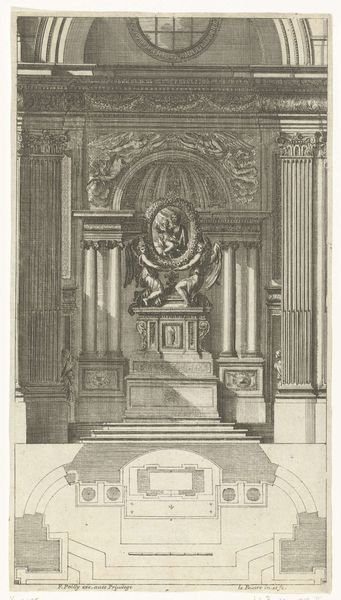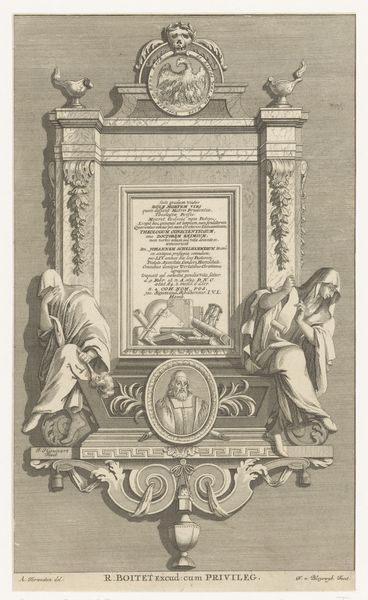
print, engraving, architecture
#
portrait
#
baroque
# print
#
old engraving style
#
italian-renaissance
#
engraving
#
architecture
Dimensions: height 340 mm, width 220 mm
Copyright: Rijks Museum: Open Domain
Curator: Okay, let's delve into this 1642 engraving, "Monument voor kardinaal Virginio Orsini." Immediately, the focus for me is on the materials and labor involved in its production. What catches your eye initially? Editor: Well, it’s a print, so seeing the details of the architecture rendered in lines is quite something. There’s a solemn quality, like a grand stage setting. The central portrait is surrounded by lots of symbolic elements, which makes it seem... Important? What do you see in this piece beyond the initial impression? Curator: Precisely. Consider the engraving process. Copperplate engraving demands immense skill and time. The artisan's labor, the very physical act of carving into metal to produce these lines – it's a deliberate, arduous task. It highlights a conscious consumption of time and resources dedicated to commemorating Cardinal Orsini. What does this tell us about the social standing or influence needed to warrant such intensive production? Editor: So, the labor and cost that goes into making an artwork can also tell us something about the artwork’s cultural significance? I guess that’s why prints were considered so valuable at the time? Curator: Absolutely. And look closely at the architectural setting. This wasn’t some quick sketch. Someone carefully designed it, factoring in Renaissance ideals of proportion and grandeur. We can deduce this reflects on Orsini's status as a patron of the arts, someone tied to architectural developments. Think of the raw materials - ink, paper, metal - all transformed through the craftsman’s hand. How were these materials sourced, circulated? This helps ground the portrait within its societal web. Editor: That's a perspective shift for me. I've been so focused on subject and style, but seeing it through the lens of labor and materials provides context. Thanks! Curator: Indeed! By interrogating the "how" and "what of" of its making, we unearth layers of cultural significance intertwined with social structures and value systems during that period.
Comments
No comments
Be the first to comment and join the conversation on the ultimate creative platform.
